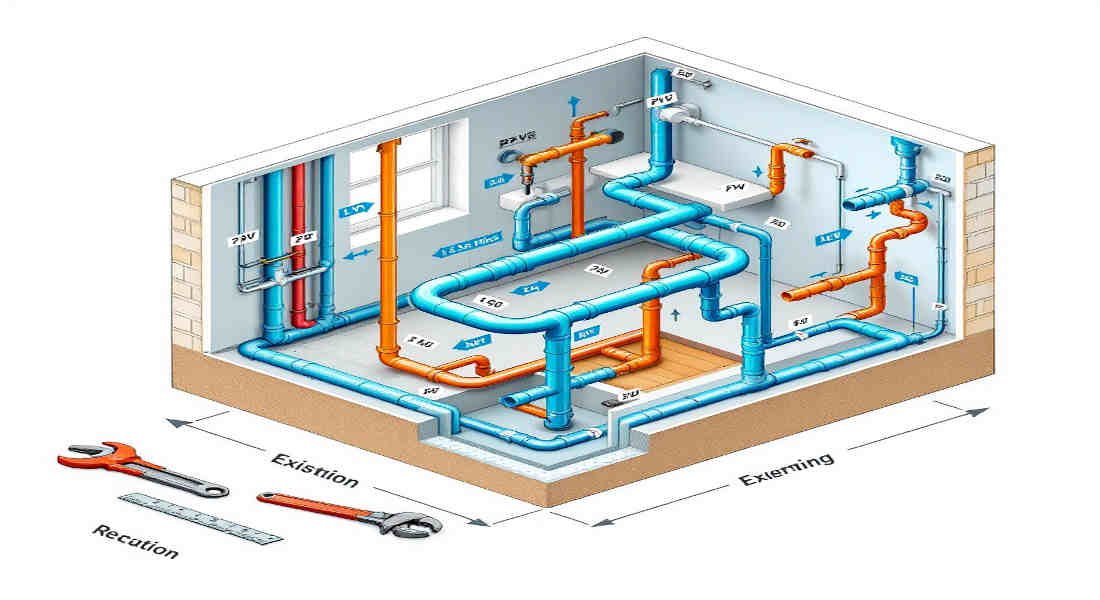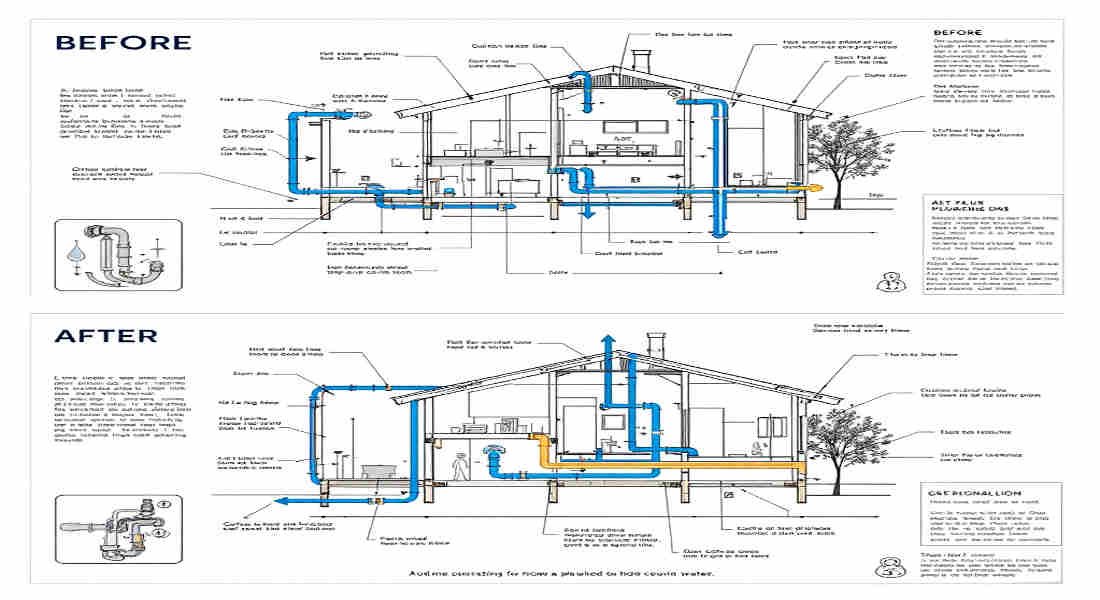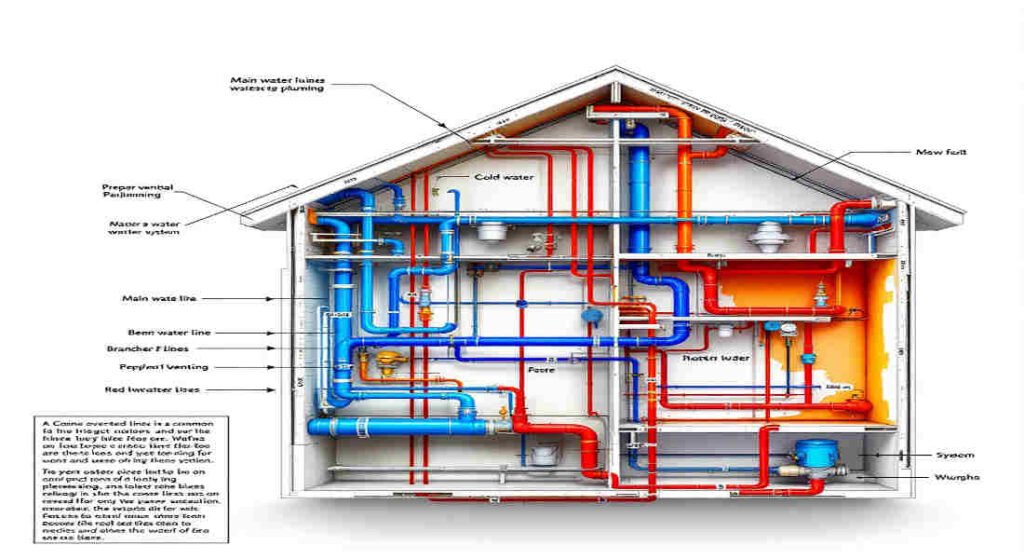When it comes to home renovations, repairs, or upgrades, understanding how to reroute home plumbing is a skill every homeowner and renovator should know about. Whether you’re remodelling your kitchen, upgrading your bathroom, or addressing a major plumbing issue, learning how to reroute plumbing can save you time, money, and future headaches.
Plumbing rerouting refers to the process of altering the existing path of your pipes to accommodate new layouts, fix underlying issues, or upgrade old systems.
Understanding Home Plumbing Systems
To successfully reroute plumbing, it’s essential to first understand the basics of your home’s plumbing system. Let’s break it down into simple components:
The Key Components of Home Plumbing
- Water Supply Lines: These pipes provide clean water to your sinks, showers, toilets, and appliances.
- Drainage Pipes: These carry wastewater away from your home to the sewer or septic system.
- Sewer Lines: These larger pipes connect your home to the municipal sewer system or septic tanks.
How Plumbing Systems Are Typically Laid Out
- In most homes, the water supply and drainage systems are designed to be efficient and hidden. Pipes are placed behind walls, under floors, or in ceilings.
- The main water supply typically enters near the home’s foundation, branching out to different fixtures. Similarly, drainage pipes slope downward to allow wastewater to flow out.
Why Rerouting May Be Necessary
- Renovations: Remodelling a bathroom or kitchen often requires moving fixtures, which means rerouting plumbing.
- Slab Leaks: If pipes beneath your home’s foundation develop leaks, rerouting is often the best solution.
- Damaged Pipes: Burst or corroded pipes may require rerouting to avoid recurring problems.
- Layout Changes: Adding new rooms or altering existing spaces may necessitate a new plumbing layout.
Understanding your home’s plumbing system is the foundation for a successful reroute—it helps you identify potential challenges and plan accordingly.
When and Why to Reroute Home Plumbing
Rerouting plumbing isn’t always the first solution that comes to mind, but there are specific scenarios when it becomes necessary or beneficial.
You may also read (clean plumbing pipes at home).
Signs It’s Time to Reroute Plumbing
- Persistent Leaks: If you’re dealing with recurring leaks, it might indicate a larger issue with your pipes.
- Plumbing Efficiency Issues: An inefficient layout can lead to slow drainage or inconsistent water pressure.
- Remodelling Projects: Moving fixtures like sinks, toilets, or showers requires rerouting the pipes.
- Slab or Wall Damage: If pipes are located in hard-to-reach areas (like under concrete slabs), rerouting may be the least invasive option.
Rerouting vs. Repairs or Replacement
- Repairs: Suitable for isolated issues like a single pipe leak.
- Replacement: Best for outdated plumbing systems that need a full overhaul.
- Rerouting: Ideal if pipes are in inaccessible locations or when changing the layout of your home.
Benefits of Rerouting Plumbing
- Cost-Effectiveness: Rerouting can be more affordable than fixing recurring issues or replacing an entire system.
- Improved Efficiency: A new layout may optimise water flow and drainage.
- Reduced Invasive Repairs: By bypassing problem areas, you can avoid further damage to your home’s structure.
Planning Your Plumbing Reroute
A successful plumbing reroute begins with careful planning. Here’s how to get started:
Assess Your Existing Plumbing System
- Map out your current plumbing layout, noting the locations of pipes, fixtures, and main water supply lines.
- Check for potential obstacles like walls, floors, or structural beams that may complicate rerouting.
Design the New Layout
- Identify where new fixtures will be placed and plan the pipe routes accordingly.
- Ensure that water supply lines and drainage pipes maintain proper slopes for efficient flow.
Follow Local Building Codes
- Research local regulations to ensure your reroute complies with building codes.
- Obtain necessary permits before starting the project.
Avoid Structural Damage
- Use stud finders and pipe locators to identify hidden installations like electrical wires, gas lines, or HVAC ducts.
- Plan routes that minimise cutting into load-bearing walls or floors.
You may also read (home plumbing first appear).
Routing Path Tips
- Avoid Cold Walls: In colder climates, pipes routed along exterior walls may freeze.
- Maintain Slopes: Drainage pipes need a downward slope of about ¼ inch per foot to ensure proper flow.
Proper planning is the key to avoiding costly mistakes and ensuring a smooth rerouting process.
Materials and Tools Needed for Rerouting Plumbing
When it comes to rerouting plumbing, having the right materials and tools is crucial.
Common Plumbing Materials
Material Pros Cons
Copper is Durable, long-lasting, Expensive, and requires soldering
PEX Flexible, easy to install, may not be UV-resistant
PVC Affordable, lightweight , Limited to cold water
CPVC handles hot water well , but it Brittle over time
Essential Tools
- Pipe Cutters: These are for cutting pipes to size.
- Soldering Kit: Needed for copper pipe connections.
- Wrenches: For tightening fittings.
- Drills and Clamps: To secure pipes in place.
Safety Gear
- Gloves, safety glasses, and a dust mask are essential for protection during demolition and installation.
Step-by-Step Guide: How to Reroute Home Plumbing
Prepare the Site
- Shut off the water supply and drain all pipes.
- Clear the work area to ensure safety.
Demolition
- Carefully open walls, floors, or ceilings to access the plumbing.
- Use a stud finder to avoid damaging hidden installations.
Cut and Cap Old Pipes
- Use pipe cutters to remove unused sections.
- Cap the old pipes securely to prevent leaks.
Install New Pipes
- Follow your planned layout to install new pipes.
- Use appropriate techniques: soldering for copper, crimping for PEX, or glue for PVC.
Test the System
- Turn the water supply back on and check for leaks.
- Test all fixtures for proper flow and drainage.
Finalise the Project
- Seal up walls and restore surfaces to their original condition.
Common Challenges and How to Overcome Them
Confined Spaces
- Use flexible materials like PEX to navigate tight spaces.
Unexpected Complications
- Corroded or outdated pipes may require additional repairs.
Hidden Damage
- Always inspect for hidden electrical or gas lines before cutting.
Cost Considerations and Budgeting
Factor Estimated Cost
Materials $300-$1,000
Labour (if hiring) $1,000-$5,000
Permits $50-$200
Maintenance Tips After Rerouting
- Regularly inspect for leaks or issues.
- Keep an eye on water pressure and drainage efficiency.
You may also read (heavy rain and plumbing).

